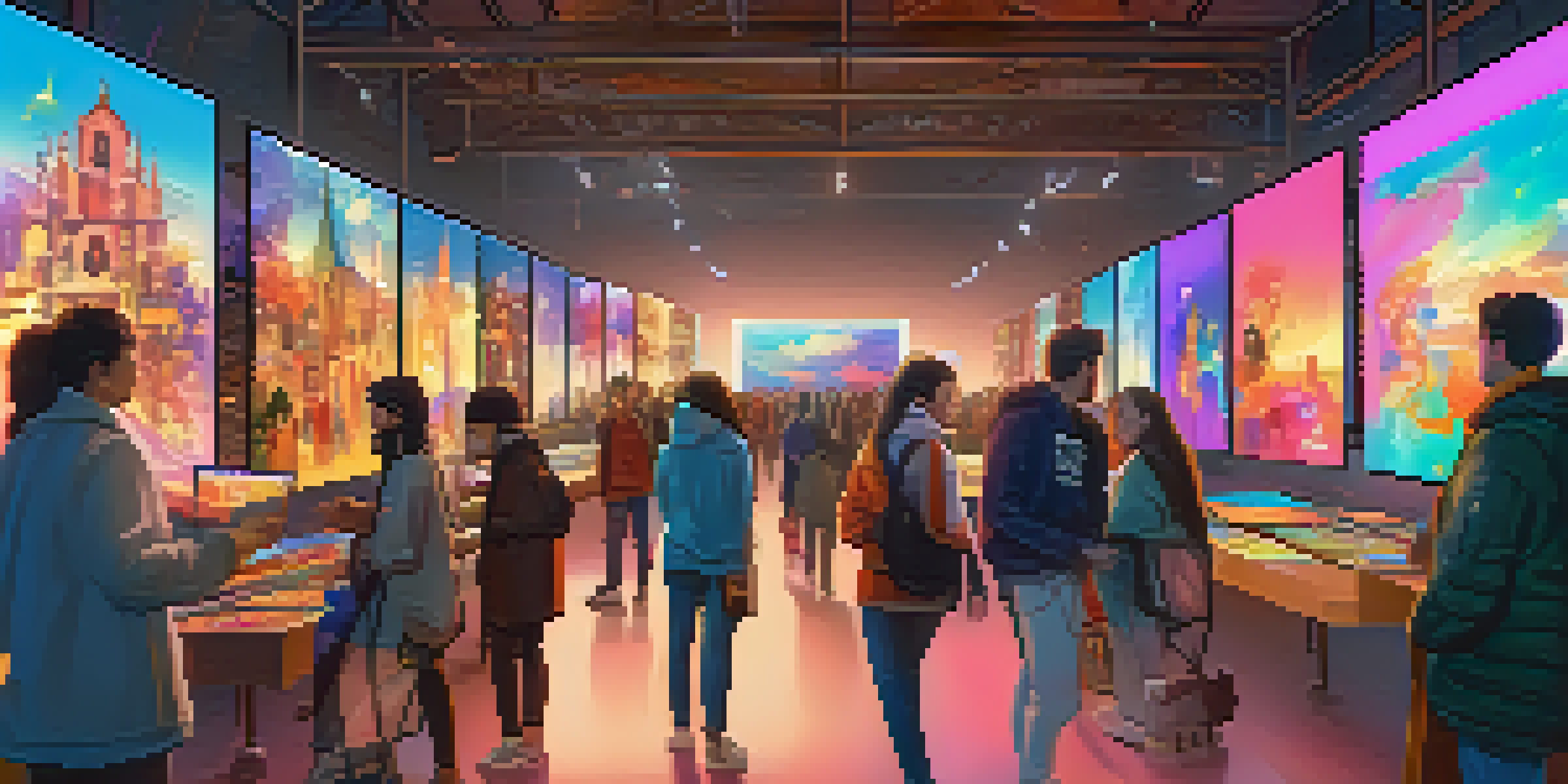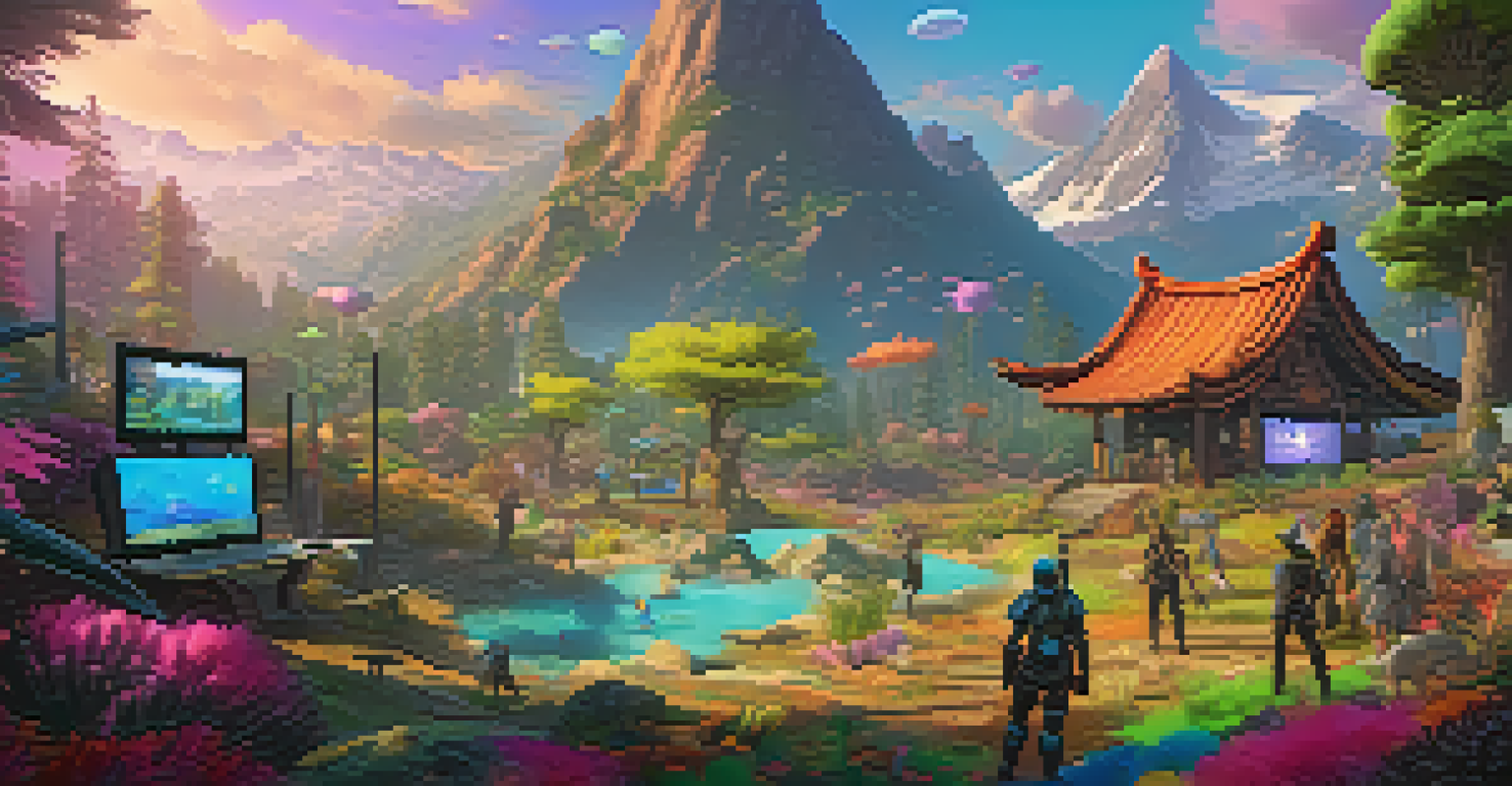Types of NFTs: Unique Digital Assets Explained Clearly

What Are NFTs? An Introduction to Digital Ownership
Non-fungible tokens (NFTs) are unique digital assets that signify ownership of a specific item or piece of content on the blockchain. Unlike cryptocurrencies like Bitcoin, which are interchangeable, NFTs are one-of-a-kind, making them ideal for representing art, music, and collectibles. This uniqueness is what gives NFTs their value, as they cannot be replicated or exchanged on a one-to-one basis.
Digital ownership has the potential to redefine our relationship with art, music, and collectibles in ways we have yet to fully understand.
To illustrate, think of NFTs like a signed limited edition print of a famous painting. While there may be many prints, each signed copy holds a special significance and value due to its rarity and authenticity. This concept of digital scarcity is what fuels the booming NFT market, creating a new way for artists and creators to monetize their work.
As we delve deeper into the types of NFTs, it’s essential to grasp this core idea of uniqueness and ownership, as it applies across various categories of digital assets.
Digital Art: The Most Popular Type of NFT
Digital art has taken the NFT world by storm, allowing artists to sell their creations directly to collectors. Platforms like OpenSea and Rarible have become bustling marketplaces where unique pieces of digital art can fetch millions of dollars. This phenomenon not only empowers artists but also democratizes the art world, enabling anyone to enter the space.

For example, Beeple, a digital artist, sold an NFT artwork for a staggering $69 million, showcasing the potential for digital art to achieve traditional art auction prices. This shift in perception has encouraged many artists to experiment with the medium, leading to an explosion of creativity and innovation.
NFTs Enable Unique Digital Ownership
Non-fungible tokens (NFTs) represent unique digital assets, allowing for verified ownership of items like art and collectibles on the blockchain.
In essence, digital art NFTs not only represent ownership but also challenge our understanding of art, pushing boundaries in how we view creativity in the digital age.
Collectibles: From Trading Cards to Virtual Pets
NFT collectibles have become a massive trend, with projects like CryptoPunks and Bored Ape Yacht Club leading the charge. These digital items can range from virtual trading cards to unique in-game assets, appealing to collectors who value rarity and community. Just like traditional collectibles, the thrill of the hunt and ownership drives the passion for these digital treasures.
NFTs are more than just a trend; they represent a fundamental shift in how we perceive value and ownership in the digital age.
Take the case of NBA Top Shot, a platform where fans can buy, sell, and trade officially licensed NBA collectible highlights. Each moment is an NFT, showcasing gameplay in a way that resonates with sports fans and collectors alike. This merging of sports and blockchain has created a new genre of fandom that thrives on digital ownership.
Ultimately, NFT collectibles tap into our innate desire to collect and showcase, transforming the way we engage with our favorite hobbies and interests.
Music and NFTs: Transforming the Music Industry
Musicians are increasingly turning to NFTs to distribute their music and connect with fans in innovative ways. By releasing songs or albums as NFTs, artists can retain more control over their work and potentially earn more revenue. This shift is particularly important in an industry where streaming often pays artists very little.
For instance, electronic musician 3LAU sold an NFT album that included special perks for buyers, such as exclusive access to future shows and unreleased tracks. This direct-to-fan approach not only enhances the connection between artists and their audiences but also creates new revenue streams for musicians navigating the changing landscape of music consumption.
Digital Art is Leading the NFT Boom
Digital art NFTs have transformed the art market, enabling artists to sell directly to collectors and achieve significant sales, such as Beeple's $69 million artwork.
In summary, music NFTs are redefining how artists engage with fans, enabling them to offer unique experiences while monetizing their work more effectively.
Virtual Real Estate: Buying Land in the Metaverse
One of the more intriguing types of NFTs is virtual real estate, where users can buy, sell, and develop land within digital environments. Platforms like Decentraland and The Sandbox allow users to create, build, and monetize their virtual properties, blurring the lines between the physical and digital worlds. This concept is akin to owning property in a digital city, where the possibilities for development are limited only by your imagination.
For example, in Decentraland, users have purchased virtual plots for hundreds of thousands of dollars, with some even hosting events and building experiences for others to enjoy. This burgeoning market has attracted investors and gamers alike, eager to capitalize on the potential of virtual land ownership.
In essence, virtual real estate NFTs offer a glimpse into a future where our digital lives are as significant as our physical ones, creating a new frontier for investment and creativity.
Gaming NFTs: Changing the Way We Play
Gaming NFTs are revolutionizing the gaming industry by allowing players to truly own in-game assets, such as skins, weapons, or even characters. This shift empowers players, as they can buy, sell, or trade their items outside of the game, unlike traditional gaming where assets are often locked within the platform. This concept creates a new economy within games, where players can earn real money through gameplay.
A prime example is Axie Infinity, a game where players breed, battle, and trade cute creatures called Axies, each represented as an NFT. Players can earn cryptocurrency through gameplay, and some even make a living by participating in this digital ecosystem. This blend of gaming and finance has attracted a diverse audience, from gamers to investors.
Gaming NFTs Empower Players Economically
Gaming NFTs allow players to own, trade, and monetize in-game assets, creating a new economy where gameplay can lead to real financial gain.
Ultimately, gaming NFTs are transforming the gaming experience, providing players with real ownership and creating opportunities for financial gain through their favorite pastime.
Fashion and NFTs: The Future of Digital Wearables
The fashion industry is also embracing NFTs, creating unique digital wearables that can be showcased in virtual environments or on social media. Brands like Gucci and Nike are exploring the potential of digital fashion, allowing consumers to own exclusive designs that exist only online. This trend reflects a growing acknowledgment of the digital space as a legitimate avenue for self-expression and style.
Consider the example of RTFKT Studios, which combines gaming with high fashion by creating virtual sneakers that can be worn in games and showcased on social media. These digital items not only appeal to gamers but also fashion enthusiasts looking for unique pieces to set themselves apart. This intersection of fashion and technology is paving the way for a new era of digital expression.

In summary, fashion NFTs are reshaping how we view clothing and identity in the digital landscape, offering a glimpse into a future where your virtual wardrobe is just as important as your physical one.
The Future of NFTs: Trends and Predictions
As the NFT space continues to evolve, we can expect to see even more innovative applications across various industries. The future may bring enhanced interactivity in NFTs, such as integrating augmented reality (AR) or virtual reality (VR) experiences that allow users to engage with their digital assets in new ways. This could further blur the lines between the digital and physical worlds.
Moreover, as more creators and brands enter the NFT space, we might see a rise in community-driven projects that prioritize collaboration and shared ownership. This shift could lead to more inclusive environments where fans and creators work together to shape the content and experiences they love.
Ultimately, the future of NFTs is bright and full of possibilities, as they continue to reshape our understanding of ownership, creativity, and community in the digital realm.